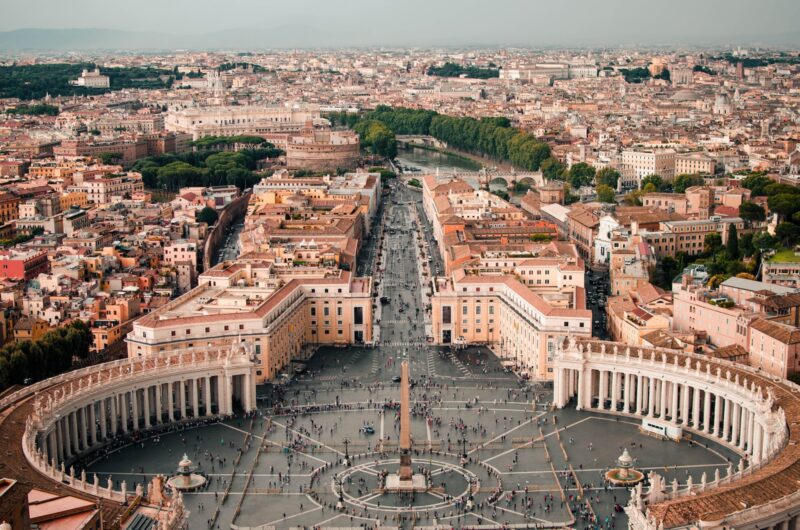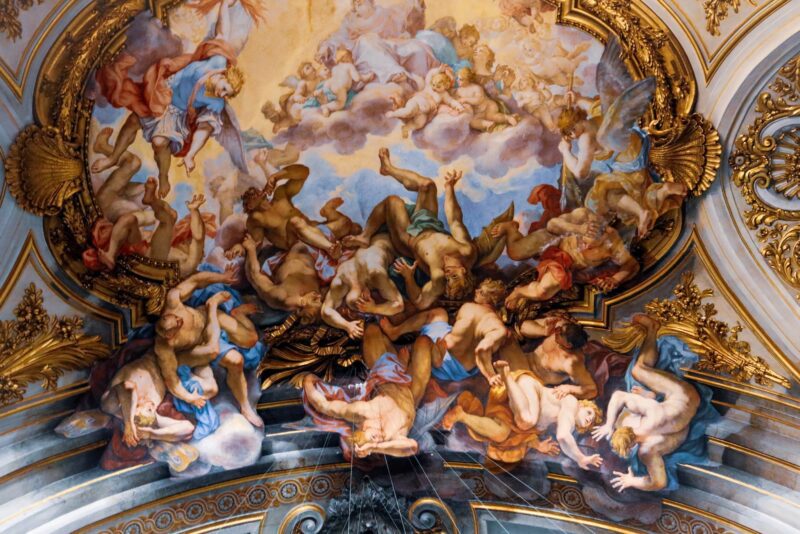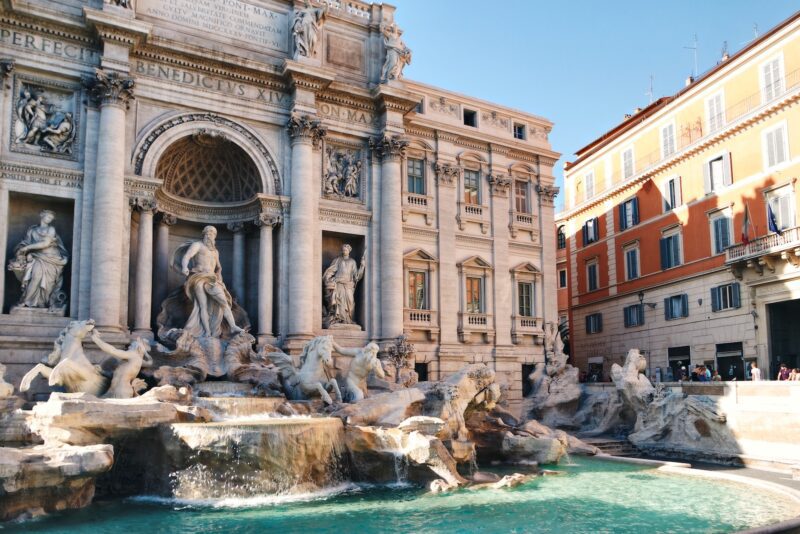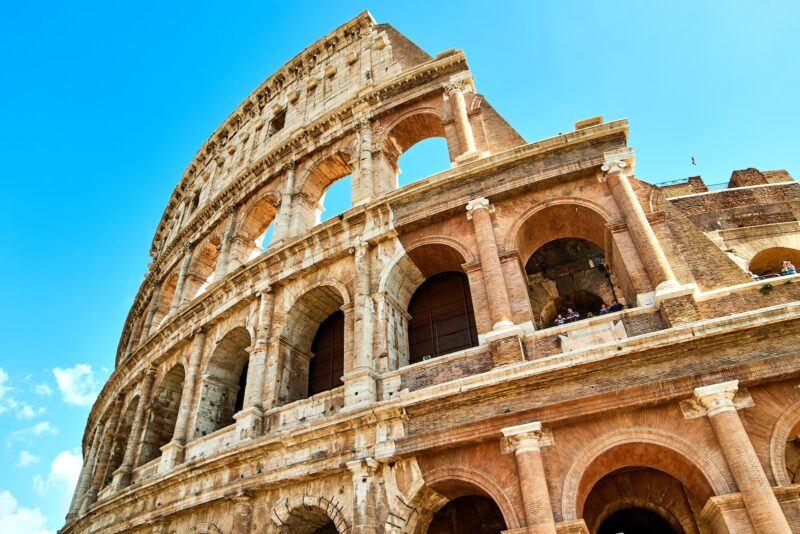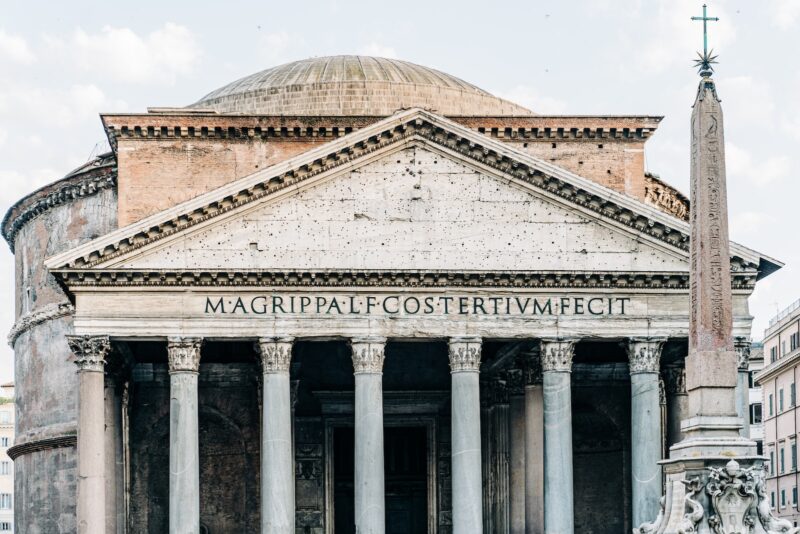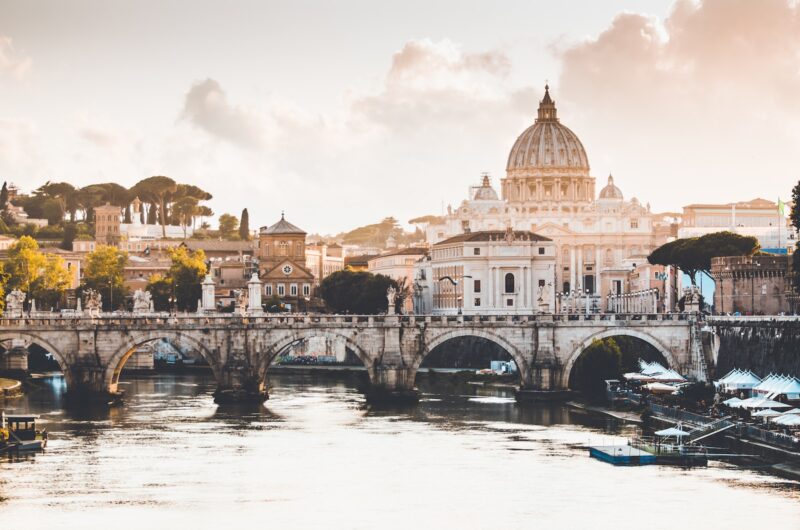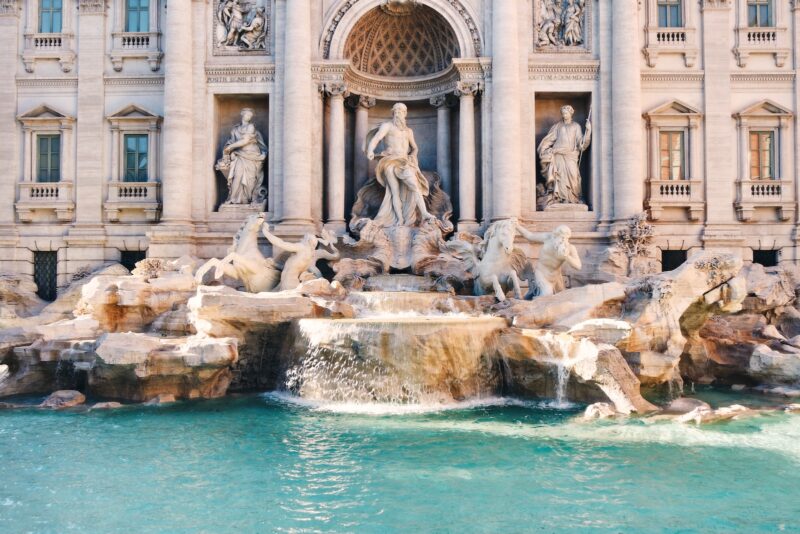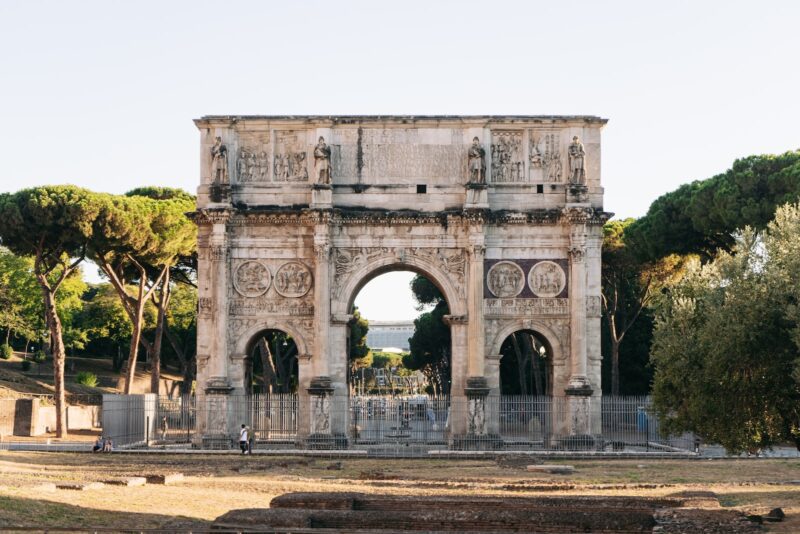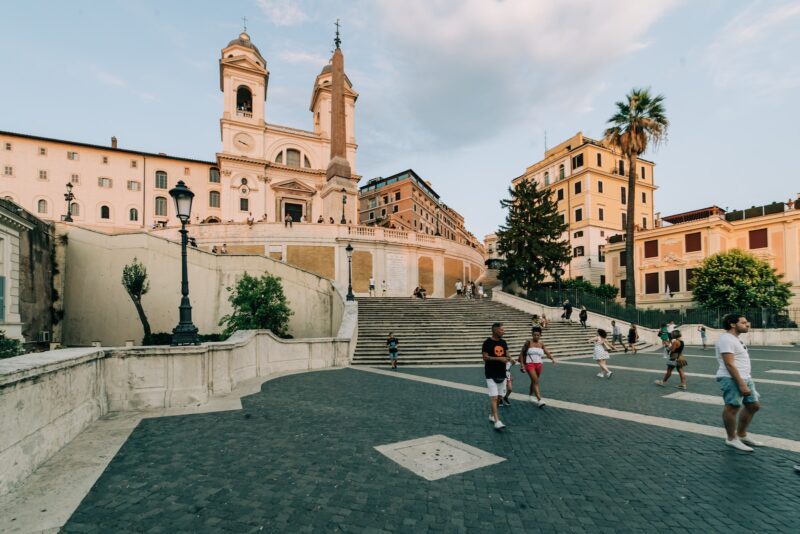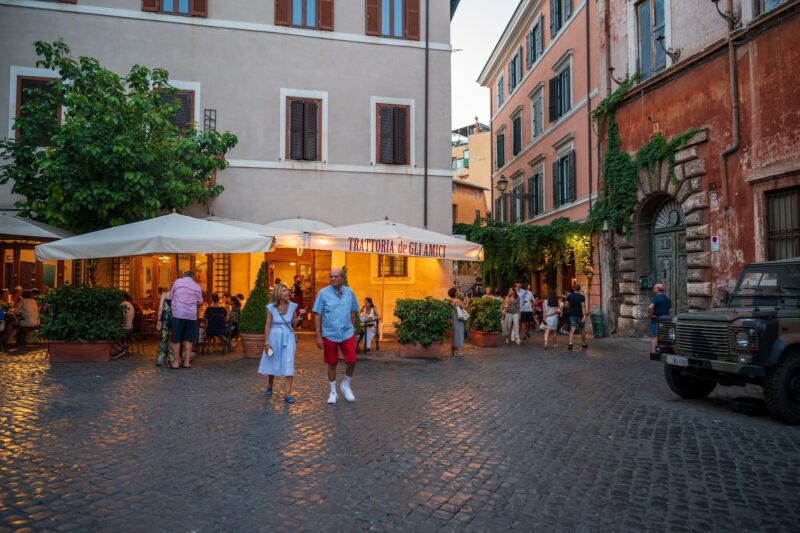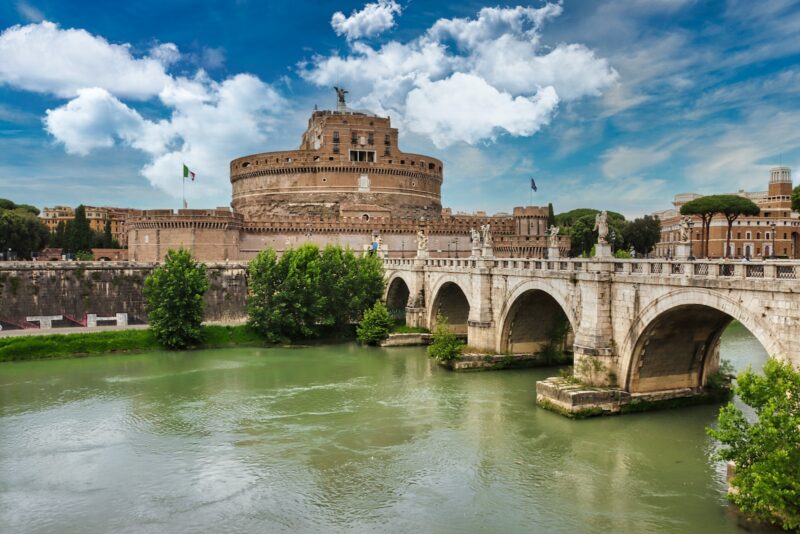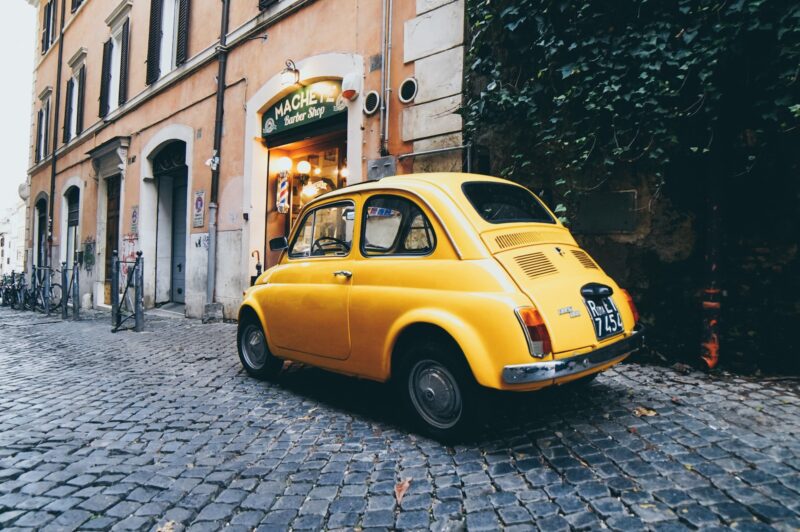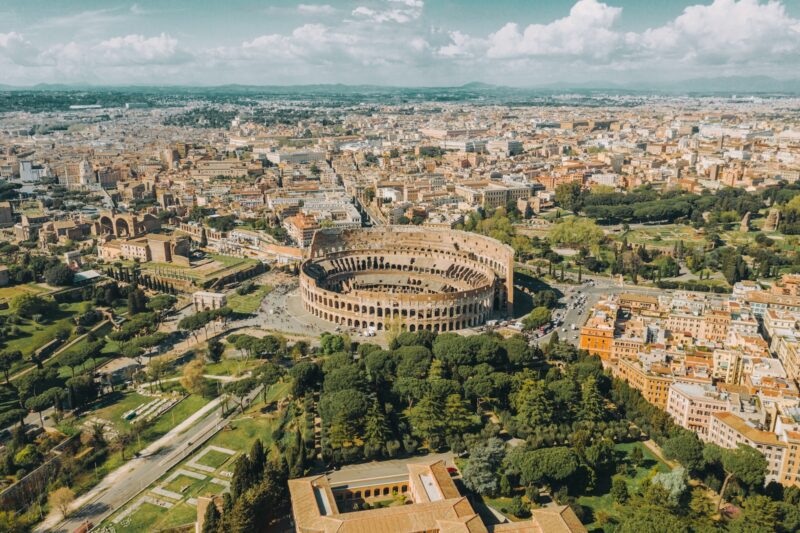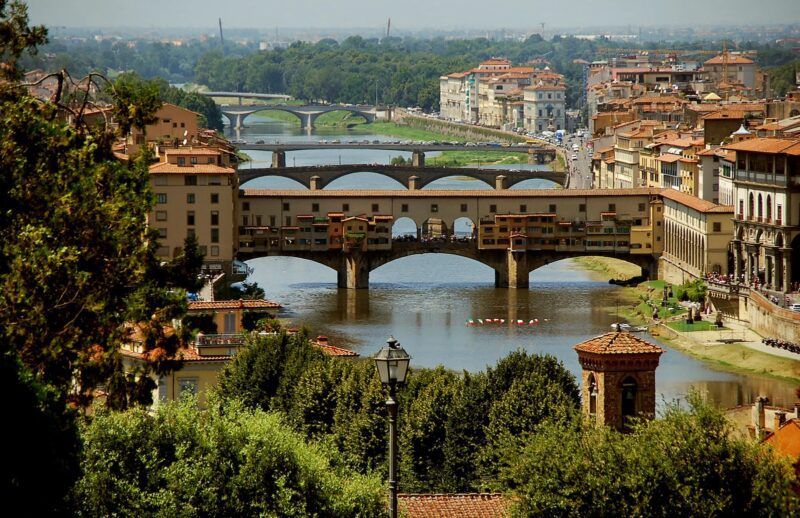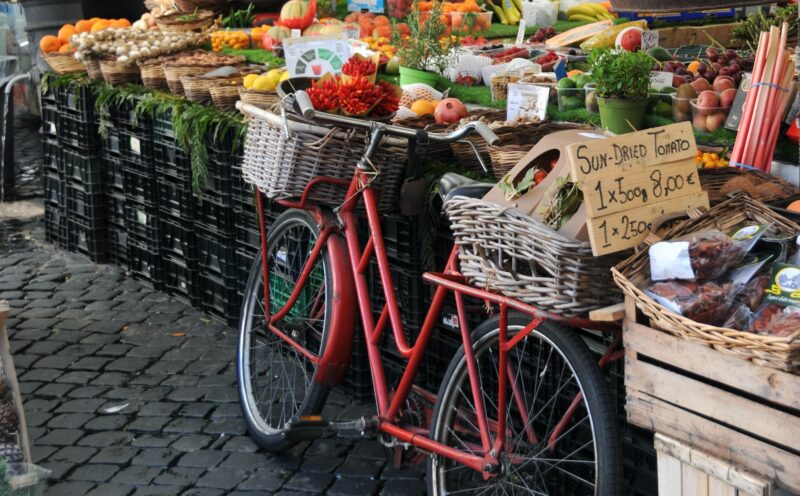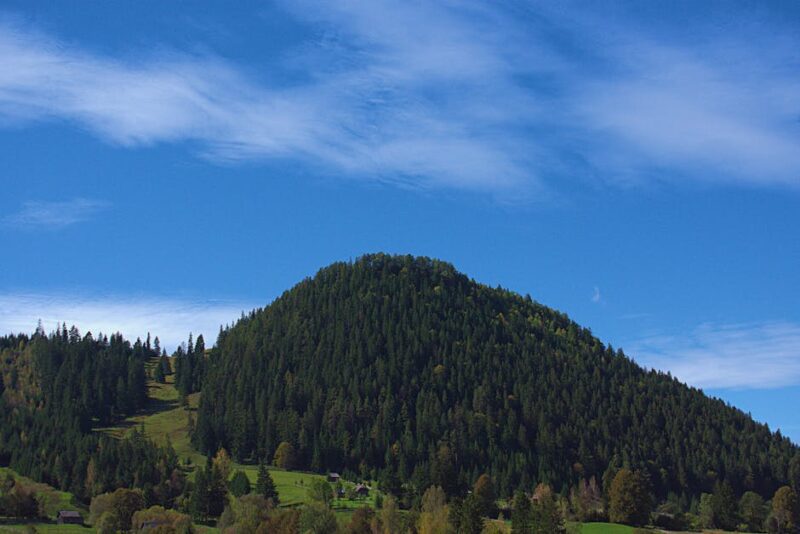Rome, also known as the Eternal City, is a destination that has captured the hearts of travelers for centuries. With its rich history, stunning architecture, and delicious cuisine, Rome is a must-visit for anyone traveling to Italy. Whether you’re looking to explore ancient ruins, stroll through picturesque streets, or indulge in some of the world’s best gelato, Rome has something for everyone.
This travel guide to Rome will provide you with all the information you need to plan your trip to this iconic city. From the best time to visit to the top things to see and do, this guide will help you make the most of your time in Rome. Discover the city’s famous landmarks, such as the Colosseum and the Vatican, or venture off the beaten path to explore hidden gems like the Trastevere neighborhood. With this guide in hand, you’ll be able to experience the city like a local and create memories that will last a lifetime.
Table of Contents
ToggleHistory of Rome
Rome is a city steeped in history, dating back over 2,500 years. It was founded in 753 BC by the twin brothers Romulus and Remus, according to legend. However, archaeological evidence suggests that the city was inhabited long before that. The city grew to become the capital of the Roman Empire, which at its peak, spanned from Spain to Syria.
One of the most significant periods in Roman history was during the Roman Republic (509 BC – 27 BC). During this time, Rome was ruled by elected officials, and the city became a center of culture and commerce. The Roman Forum, located in the heart of the city, was the center of political and social life in ancient Rome. It was the site of public speeches, trials, and gladiatorial contests. Today, visitors can still see the ruins of the Forum and imagine what life was like in ancient Rome.
Another important site in Roman history is the Palatine Hill. According to legend, it was on this hill that Romulus founded the city of Rome. In reality, the hill was home to many of Rome’s wealthiest citizens, including emperors and aristocrats. Visitors can explore the ruins of their opulent palaces and take in stunning views of the city.
Over the centuries, Rome has been sacked, invaded, and rebuilt many times. It has survived wars, plagues, and political upheavals. Today, it is a vibrant city that seamlessly blends ancient history with modern culture.
In summary, Rome’s history is a long and complex one, with many significant events and figures. From its legendary founding to its rise as the center of the Roman Empire, the city has played a pivotal role in shaping Western civilization. Visitors can explore the ruins of ancient Rome at the Roman Forum and Palatine Hill, and experience the city’s rich cultural heritage firsthand.
Art and Culture
Rome is a city steeped in history and culture, but it is also a place rich in art. The city is home to numerous museums, galleries, and exhibitions that showcase the best of Italian art and culture.
One of the most famous museums is the Vatican Museums. This museum is home to an extensive collection of art and artifacts that span centuries. Visitors can see works by some of the most famous artists in history, including Michelangelo and Bernini. The highlight of the museum is undoubtedly the Sistine Chapel, which is decorated with some of the most beautiful frescoes in the world.
In addition to the Vatican Museums, many other museums are worth visiting. The Capitoline Museums, for example, are home to a vast collection of ancient Roman art and artifacts. The National Gallery of Modern Art, on the other hand, showcases some of the best contemporary art from Italy and beyond.
Art lovers should also take the time to explore some of Rome’s many galleries. The city is home to numerous galleries that showcase both contemporary and traditional art. One of the most popular galleries in Rome is the Galleria Borghese, which is home to an impressive collection of Baroque art.
Finally, visitors should take the time to explore Rome’s many cultural attractions. From the ancient ruins to the modern-day festivals, Rome has something for everyone. Whether you’re interested in history, art, or music, you’re sure to find something that will capture your imagination in this vibrant and exciting city.
Famous Landmarks
Rome is home to some of the most iconic landmarks in the world. From the ancient Colosseum to the grandeur of the Vatican, there are plenty of must-see attractions in the city. Here are some of the most famous landmarks that are most-certainly worth a visit:
Colosseum
The Colosseum is one of Rome’s most iconic landmarks and is a testament to the city’s rich history. This ancient amphitheater was built in 80 AD and was used for gladiatorial contests and public spectacles. Today, it is one of the most visited landmarks in Rome, attracting millions of tourists each year. Visitors can explore the Colosseum’s underground chambers and learn about the history of this impressive structure.
Pantheon
The Pantheon is one of the best-preserved ancient buildings in Rome and is a true masterpiece of engineering. This stunning temple was built in 27 BC and was dedicated to all the gods of ancient Rome. The Pantheon’s dome is its most impressive feature, with a diameter of 43 meters and a height of 43 meters. Visitors can marvel at the Pantheon’s intricate architecture and learn about its fascinating history.
Vatican
The Vatican is the smallest independent state in the world and is home to some of the most impressive landmarks in Rome. Visitors can explore the Vatican Museums and marvel at the stunning artwork on display, including Michelangelo’s famous Sistine Chapel. St. Peter’s Basilica is another must-see attraction in the Vatican, with its grandeur and beauty leaving visitors in awe.
Spanish Steps
The Spanish Steps are one of Rome’s most popular landmarks and are a great spot for people watching. This grand staircase was built in the 18th century and connects the Piazza di Spagna with the Trinità dei Monti church. Visitors can climb the 135 steps to the top and enjoy panoramic views of the city.
Trevi Fountain
The Trevi Fountain is one of Rome’s most famous landmarks and is a must-see attraction for any visitor. This stunning baroque fountain was built in the 18th century and is a symbol of Rome’s artistic heritage. Visitors can toss a coin into the fountain and make a wish, a tradition that has been carried out for centuries.
Arch of Constantine
The Arch of Constantine is one of Rome’s most impressive landmarks and is a testament to the city’s rich history. This triumphal arch was built in 312 AD and commemorates Emperor Constantine’s victory over Maxentius at the Battle of Milvian Bridge. Visitors can admire the intricate carvings on the arch and learn about its fascinating history.
Piazza del Campidoglio
Piazza del Campidoglio is one of Rome’s most beautiful squares and is home to some of the city’s most impressive landmarks. The square was designed by Michelangelo in the 16th century and is dominated by the Palazzo Senatorio, which houses the city’s government. Visitors can admire the stunning architecture of the Palazzo and enjoy the panoramic views of the city from the square.
Castel Sant’Angelo
Castel Sant’Angelo is one of Rome’s most impressive landmarks and is a testament to the city’s rich history. This ancient fortress was built in 139 AD and was originally used as a mausoleum for the Emperor Hadrian. Today, it is a museum and is home to some of Rome’s most impressive artwork. Visitors can explore the castle’s underground chambers and learn about its fascinating history.
Neighborhoods to Explore
Rome is a city with a rich history and culture, and exploring its various neighborhoods is an excellent way to experience it. Each neighborhood has its unique character, and visitors can choose the ones that best suit their interests. Here are some of the neighborhoods worth exploring.
Monti
Monti is a charming neighborhood located near the Colosseum. It is known for its cobblestone streets, artisan shops, and trendy bars and restaurants. Visitors can explore the neighborhood’s many boutiques, vintage shops, and art galleries. Monti is also home to the beautiful Basilica di Santa Maria Maggiore, one of Rome’s most significant churches.
Testaccio
Testaccio is a vibrant neighborhood that is popular with locals. It is known for its excellent food scene, with many restaurants serving traditional Roman cuisine. Visitors can explore the Mercato Testaccio, a bustling market where they can sample local delicacies. Testaccio is also home to the MACRO, a contemporary art museum that showcases the work of emerging artists.
Trastevere
Trastevere is a picturesque neighborhood located on the west bank of the Tiber River. It is known for its narrow streets, colorful buildings, and lively nightlife. Visitors can explore the neighborhood’s many bars, restaurants, and cafes, which serve traditional Roman cuisine. Trastevere is also home to the beautiful Basilica di Santa Maria in Trastevere, one of Rome’s oldest churches.
Centro Storico
The Centro Storico is Rome’s historic center and is home to many of the city’s most famous landmarks. Visitors can explore the neighborhood’s many ancient ruins, beautiful churches, and stunning architecture. The Centro Storico is also home to some of Rome’s best shopping, with many high-end boutiques and designer stores.
Ostiense
Ostiense is a trendy neighborhood that is popular with young people. It is known for its street art, nightlife, and alternative culture. Visitors can explore the neighborhood’s many bars, clubs, and music venues, which offer a diverse range of entertainment options. Ostiense is also home to the Centrale Montemartini, a unique museum that showcases ancient Roman sculptures in a modern setting.
In conclusion, Rome has many neighborhoods worth exploring, each with its unique character and attractions. Visitors should take the time to explore as many of them as possible to get a true sense of the city’s rich history and culture.
Culinary Delights
Rome is not only famous for its historical landmarks, but also for its mouth-watering cuisine. Italian food is known for its simplicity, fresh ingredients, and bold flavors. From pizza to pasta to gelato, there are many culinary delights to explore in Rome.
One of the must-try dishes is Cacio e Pepe, a simple yet flavorful pasta dish made with pecorino Romano cheese and black pepper. Another popular pasta dish is Carbonara, made with eggs, pancetta, and pecorino cheese. Artichokes are also a popular ingredient in Roman cuisine and can be found in dishes such as Carciofi alla Romana, which is stuffed with garlic and parsley.
Offal, or the internal organs of animals, is also a common ingredient in Roman cuisine. Dishes such as Trippa alla Romana, made with tripe, and Coda alla Vaccinara, a slow-cooked oxtail stew, are popular among locals and tourists alike.
Aperitivo, a pre-dinner drink and snack, is a popular tradition in Rome. It typically consists of a glass of wine or a cocktail and small plates of snacks such as olives, cheese, and cured meats.
When it comes to dessert, gelato is a must-try in Rome. Gelato is a frozen dessert similar to ice cream, but with a denser and creamier texture. Some of the popular gelato flavors in Rome include pistachio, hazelnut, and chocolate.
Rome offers a wide range of culinary delights for visitors to explore. Whether you are a foodie or just looking to try some authentic Italian cuisine, Rome has something for everyone.
Travel Information
Rome is a well-connected city with various options for transportation. Visitors can choose from public transportation, cabs, and car rentals to explore the city.
Public Transportation
Rome has an extensive public transportation system, including buses and metro lines. The ATAC website provides information about tickets, fares, and schedules. Tourists can purchase a Roma Pass, which allows unlimited access to public transportation and discounts on museums and attractions.
Taxis
Taxis are readily available in Rome, and they can be hailed on the street or found at designated taxi stands. It is recommended to use only licensed taxis with a meter to avoid scams. Taxis are a convenient option for short trips or when public transportation is not available.
Car Rentals
Renting a car is an option for visitors who want to explore Rome and the surrounding areas at their own pace. Major car rental companies have offices at the Leonardo da Vinci-Fiumicino Airport, and in the city center. Visitors should be aware that driving in Rome can be challenging due to heavy traffic and limited parking options.
Leonardo da Vinci-Fiumicino Airport
The Leonardo da Vinci-Fiumicino Airport is the main airport serving Rome and is located approximately 30 kilometers from the city center. Visitors can reach the city center by taxi or public transportation.
Euro
The official currency in Italy is the Euro. Visitors can exchange currency at banks, exchange offices, or withdraw cash from ATMs. Credit cards are widely accepted in hotels, restaurants, and shops.
Learn more about how to exchange currency in this post.
Practical Tips
When traveling to Rome, it’s important to keep in mind a few practical tips to ensure a smooth and enjoyable experience.
Tipping
Tipping in Rome is not as common as it is in other countries, but it’s still appreciated for exceptional service. It’s customary to round up the bill or leave a small amount as a gesture of gratitude. However, be aware that some restaurants may include a service charge in the bill, so check before leaving a tip.
Language
English is widely spoken in tourist areas of Rome, but it’s always helpful to learn a few basic Italian phrases to communicate with locals. Simple greetings and polite phrases like “please” and “thank you” can go a long way in making a good impression.
Tax
Value-added tax (VAT) is included in the price of goods and services. Non-EU residents can apply for a tax refund for purchases over a certain amount, so be sure to ask for a tax-free form and keep receipts.
Overall, Rome is a welcoming and tourist-friendly city, but it’s always a good idea to be aware of local customs and practices to ensure a positive experience.
Best Time to Visit
Rome is a beautiful city that can be visited year-round, but some months are better than others depending on what you want to do and see. The best times to visit Rome are in the fall (September to November) and in the spring (April to May) when the weather is mild, the crowds are fewer, and the prices are lower.
In the fall, Rome is less crowded, and the temperatures are cooler, making it the perfect time to explore the city’s attractions and landmarks. October is a great month to visit Rome as the weather is mild, and the city is less crowded than in the summer months. The fall season is also the time when Rome celebrates many festivals, including the Rome Film Festival, the RomaEuropa Festival, and the Rome Jazz Festival.
In the spring, Rome is in full bloom, and the weather is mild, making it the perfect time to explore the city’s gardens and parks. May is a great month to visit Rome as the temperatures are warm, and the city is less crowded than in the summer months. The spring season is also the time when Rome celebrates many festivals, including the International Workers’ Day, the Festa della Primavera, and the Rome Marathon.
It’s important to note that during the summer months (June to August), Rome can get very hot and crowded, and many locals go on vacation, making some shops and restaurants closed. However, if you don’t mind the crowds and the heat, the summer season is also a great time to visit Rome.
Overall, the best time to visit Rome is in the fall and the spring. However, if you plan your trip well, you can enjoy Rome year-round.
Day Trips from Rome
Rome is a city that is rich in history and culture, but sometimes you may want to get away from the hustle and bustle of the city and explore the surrounding areas. Luckily, there are plenty of day trips that offer a change of scenery and an opportunity to discover more of Italy’s treasures.
One of the most popular day trips from Rome is to Florence, a city known for its Renaissance art and architecture. It is only a two-hour train ride away, making it an easy and convenient option. Visitors can explore the famous Uffizi Gallery, climb to the top of the Duomo for panoramic views of the city, and stroll along the Arno River. Florence is also known for its delicious cuisine, so be sure to indulge in some authentic Italian food while you’re there.
Another great day trip option is Villa Borghese, a beautiful park located in the heart of Rome. The park is home to several museums, including the Borghese Gallery, which houses an impressive collection of art from renowned artists such as Caravaggio and Bernini. Visitors can also rent bikes or take a leisurely stroll through the park’s lush gardens and fountains.
For those looking to venture further afield, there are many other day trip options from Rome. Tivoli, a town located about an hour east of Rome, is home to the stunning Villa d’Este, a UNESCO World Heritage Site known for its beautiful fountains and gardens. Visitors can also explore Hadrian’s Villa, a sprawling complex of ruins that was once the home of the Roman Emperor Hadrian.
Other popular day trips from Rome include Orvieto, a picturesque hilltop town known for its stunning cathedral and underground caves, and Ostia Antica, an ancient Roman port city that is now a well-preserved archaeological site.
No matter where you choose to go, a day trip from Rome is a great way to experience more of Italy’s rich history and culture. So pack your bags and get ready for an adventure!
Frequently Asked Questions
How many days do you need for a comprehensive tour of Rome?
To fully explore the city and experience its rich history, culture, and cuisine, it is recommended to spend at least four to five days. This will allow you to see the major attractions such as the Colosseum, the Vatican Museums, the Pantheon, and the Trevi Fountain, as well as explore the lesser-known neighborhoods and hidden gems of the city.
What are the best places to visit for first-time travelers?
For first-time travelers, the must-visit attractions include the Colosseum, the Roman Forum, the Pantheon, the Trevi Fountain, and the Vatican Museums. These sites offer a glimpse into the city’s ancient history, art, and architecture. Piazza Navona, Campo de’ Fiori, and Trastevere are also great areas to explore for their vibrant street life, restaurants, and bars.
What is the best time of year to visit?
The best time to visit is during the spring (April to June) and fall (September to November) when the weather is mild and the crowds are smaller. The summer months (July to August) can be hot and crowded, while the winter months (December to February) can be rainy and chilly. However, visiting during the winter months can offer a unique experience of the city’s Christmas markets and festivities.
What is the average daily cost of traveling in Rome?
The average daily cost of traveling can vary depending on the type of traveler and their preferences. On average, a budget traveler can expect to spend around €50-€75 per day on accommodation, food, and transportation. Mid-range travelers can expect to spend around €100-€150 per day, while luxury travelers can spend €250 or more per day. It is important to note that prices can increase during peak tourist season and in popular areas.




